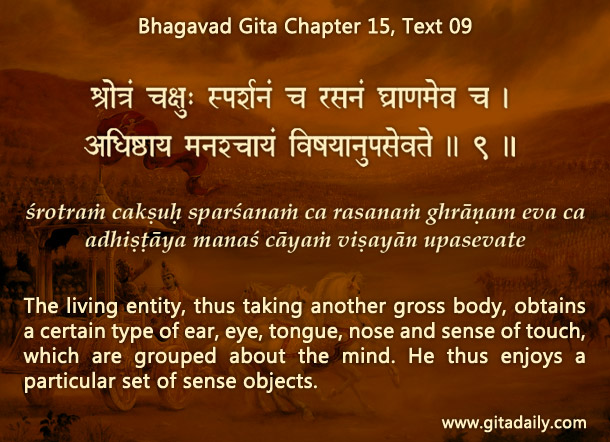Our capacity for emotions comes from the soul but our current emotions come from the mind
Suppose a child is watching a horror movie on TV and is becoming fearful. Herein, the ability to experience emotions comes from the child – if he weren’t watching TV, he wouldn’t be experiencing fear. However, that specific emotion isn’t arising from his real situation; he may be safe with his mother nearby. It comes from the TV in the sense that it is triggered by the TV.
We are like that child; our mind is like that TV; the supreme spiritual reality, Krishna, who is our eternal Lord, is like the mother. The Bhagavad-gita (15.09) indicates that our knowledge-acquiring senses are centered on the mind. The mind is like an inner screen that displays inputs coming from not just outer perception but also inner recollection. Because the mind combines perception and recollection unpredictably and imaginatively, the emotions it triggers within us aren’t always based on reality.
The horror movie metaphor highlights the difference between our ability to experience emotions and our present emotions. Emotions are a characteristic of consciousness, which is the innate energy of the soul. So, our ability to experience emotions originates from the soul. However, because we are presently captivated by the material things displayed on the mind, our present emotions are triggered by the mind.
To experience emotions connected with his real situation, the child needs to turn his attention from the horror movie to his mother. Similarly, to experience emotions based on our real identity, we need to disinvest our consciousness from matter and invest it in Krishna. This re-investment of consciousness is best brought about by practicing bhakti-yoga. By steady bhakti-yoga practice, when we start relishing loving emotions in relationship with Krishna, those emotions take us to the ultimate reality: his supreme abode which is our eternal home.
Think it over:
- How is our situation like that of the child watching a horror movie?
- Why aren’t our emotions always based on reality?
- How can we experience emotions based on our real identity?
To know more about this verse, please click on the image
Explanation of article:
https://www.youtube.com/watch?v=dIeCk4QwCuo&feature=youtu.be


Thanks